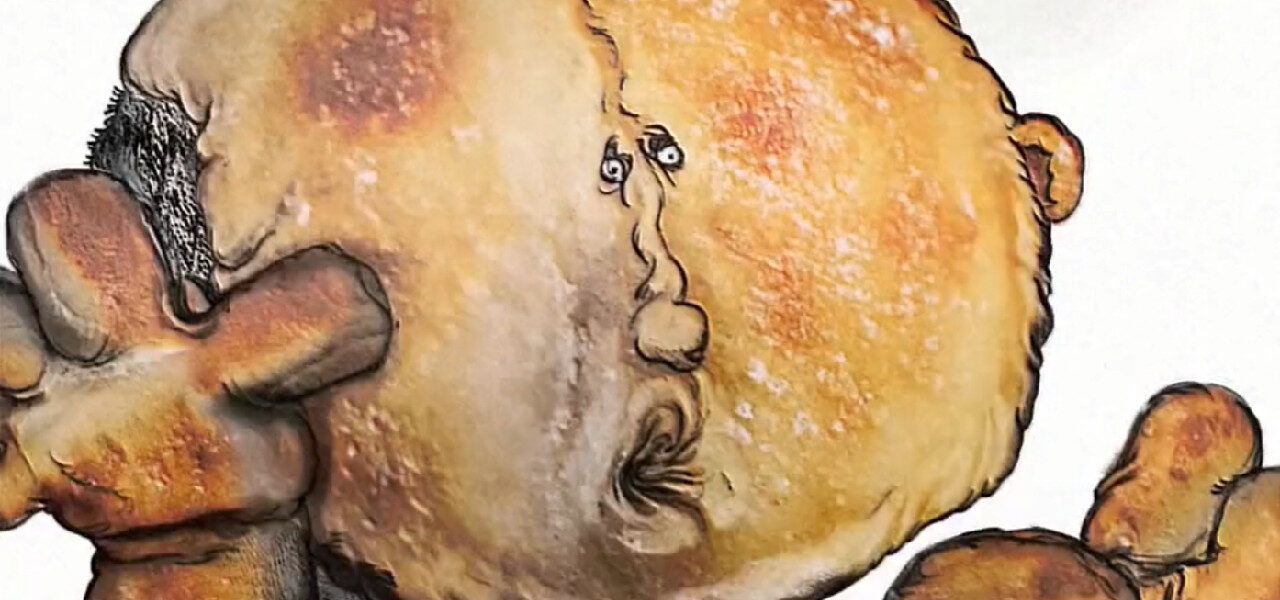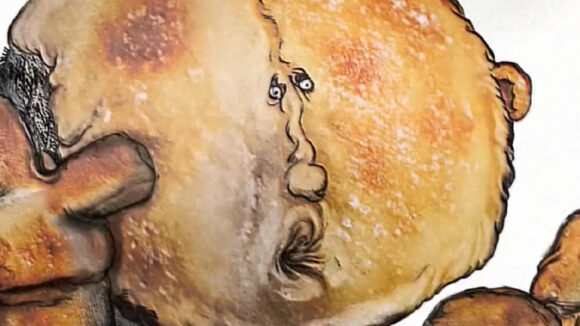

Making Bread With Alex Boya: How The Canadian Artist Is Worldbuilding In Reverse With ‘The Mill’
In the world of entertainment, it often goes that someone creates a work (e.g., Star Wars, The Simpsons) and it develops a huge following to the point where the audience is so invested in the characters and their worlds that they start imagining their own scenarios for those elements, like with fan fiction. Other times, a narrative work (e.g. The Boys, or just about any old comic book) starts out in one form and is adapted and expanded into another.
Canadian animator and artist Alex Boya (Turbine, 2018) is taking, perhaps, the opposite route. Boya, with the help of Giphy and assorted contributors, has been constructing an expanded universe called The Mill to generate interest in an eventual short film and/or series. Not an easy task, but certainly a unique one, and a successful one; Boya’s Giphy channel has 2.9 billion views.
“It’s basically an experimental world-building project that is expressed in a multi-timeline story,” Boya told Cartoon Brew during a July interview at a Portuguese restaurant in Montreal. “There are different stories simultaneously without linear, cohesive chronology. The main way that this world-building project manifests in reality is through my animation channel posted by Giphy. ”
The Mill, whose roots go back to an unpublished graphic novel Boya wrote around 2015, is structured into three phases: Walking Bread, Mill Singularity, and Breadverse. The Mill is set in the fictional city of Chuldale Estate in the province of New Bread Republic. The gist of the story is that a corporation, confronted by food shortages and climate change (nothing at all like the real world!), creates synthetic bread. When eaten, though, the bread accidently turns people into zombie-like creatures made of the stuff. While the zombies are rather harmless, living people can’t resist chewing on them, eventually turning themselves into zombies as well.
“It’s an inverted zombie story where the living and zombie roles are flipped. It’s kind of like a science fiction story,” said Boya. “It’s broadcast through a mosaic of animation bundles, which I call kinetic hieroglyphics, because it’s not like, for example, Youtube, Instagram, or Netflix where you passively receive media. It’s actually animation and other forms of storytelling that are appropriated by people to communicate in private or public conversations. So, it’s like an inverted type of media where you’re actively appropriating it as a user of these animations.”
Confused? Well, let’s start with Giphy. Giphy is the main organ of Boya’s project. Everything begins there and then trickles down into other realms (NFTs, Tenor, Instagram, and eventually linear content for a series pitch).
Giphy appealed to Boya for a variety of reasons. “They are looping memes outside of linear storytelling and hence adequate for database storytelling,” he said. “It’s blockchain storytelling. It’s decentralized and has its own autonomous production and marketing endeavors since it’s strategically keyworded in the database and hyperlinked [url links to various storefronts] while also serving as a tool for communication and creative writing.”
Boya met the Giphy folks back in 2014 when they were still a start-up company. “I used a lot of gifs on Focus [Boya’s first film for the National Film Board of Canada] as a reference point. I realized that storytelling is migrating from the content realm to the database realm. So, this means less linear, more sculptural [viewed from different angles simultaneously outside of context].”
In short, it’s a modern variation of cubist painting.
Essentially then, The Mill channel is a non-linear pilot episode, a world-building project that can be seen from different angles simultaneously, almost like an interactive media place except that you’re not a passive vessel in a contained space.
“The internet is the playground,” he explained. “The way it’s been seen, received, and socialized is effectively altering the material. People are investing energy in it. And then whenever it’s seen, it’s not being discovered, it’s being recognized. That’s the core of the operation.”
Towards that end, some 50 plus artists (including the likes of Bill Plympton, the late Gary Leib, and Theodore Ushev) have been involved in contributing to The Mill. “Usually, I either invite an artist that I really love or sometimes people call me or text me about contributing,” said Boya.
To get Plympton, Boya first showed him the channel. Different things happen on the channel, but it usually revolves around three characters: Bread Zombie, Aerodynamic Man (who has a turbine for a face like the character in Boya’s short film, Turbine), and Fork Glasses. In the end, Plympton contributed a drawing of Bread Zombie and Aerodynamic Man.
“It’s basically the cyber space version of street art, but more of an intervention and kind of like a popup that involves it,” said Boya. “It literally flattens the different distances between mediums and people’s relationships to these mediums. It’s really trying to break these hierarchies. It’s kind of swimming against the current of what I would call industry tribalism, or even media tribalism, or just this idea that things are insulated. So specifically, it’s different because these things are basically seen as sculptures. They’re being seen from different angles.”
In short, The Mill is not like a book or a film where you consume the story in a linear manner. Said Boya: “It’s basically intentional cultural appropriation on the part of the consumer of the content. I’m inviting them to appropriate it. So, it’s inverting the idea that I have a story that is purely mine and that has to be unspoiled by appropriation.”
Whatever Boya is doing, it certainly seems to have caught on. Aside from the 2.9 billion views on Giphy, The Mill has resonated with thousands of people. Just take a scroll along Boya’s Walking Bread Facebook page and you’ll see many posts featuring bread and turbine inspired images.
Boya believes the project has connected with people who “belong to an ambiguous type of soft science fiction where interpretation and appropriation is embedded in their nature, like the xenomorph that adopts anatomy from the hosting animal. But really, all these people made this possible simply by caring about it.”
Aside from just the creative reward, Boya is also making money. “There are multiple sources of income, but it’s not for profit,” he explained. “It’s cultural capital. I signed some forms that make it impossible to state publicly some of these sources, but essentially, consulting, production for Unesco, and eventually several storefronts like NFTs from some gifs, physical artworks, etc. I’m also selling the actual creative process.”
So, how does Boya envision The Mill unfolding? “The first part is the ongoing Giphy channel. Secondly, there’s the short film (Bread Will Walk) that will also serve as a pilot. Bread Will Walk will be a shorter version of the original graphic novel. Thirdly, a series, perhaps in the vein of Love, Death, + Robots, on a platform like Crave or Netflix.”
And what if the project doesn’t evolve beyond the Giphy channel and short film?
“There will eventually be a brick-and-mortar museum around 2030, probably in Bulgaria,” Boya predicts. “As for the worldbuilding operation itself, I’m sort of doing a satire of what Disney is already doing very well. I want to make a New Bread Republik on a farm in Bulgaria with passports and sovereignty. Like Burning Man, but with farming and all sorts of strange rituals. Like the Hobbiton tourist site in New Zealand but more hardcore and dangerous.”

.png)